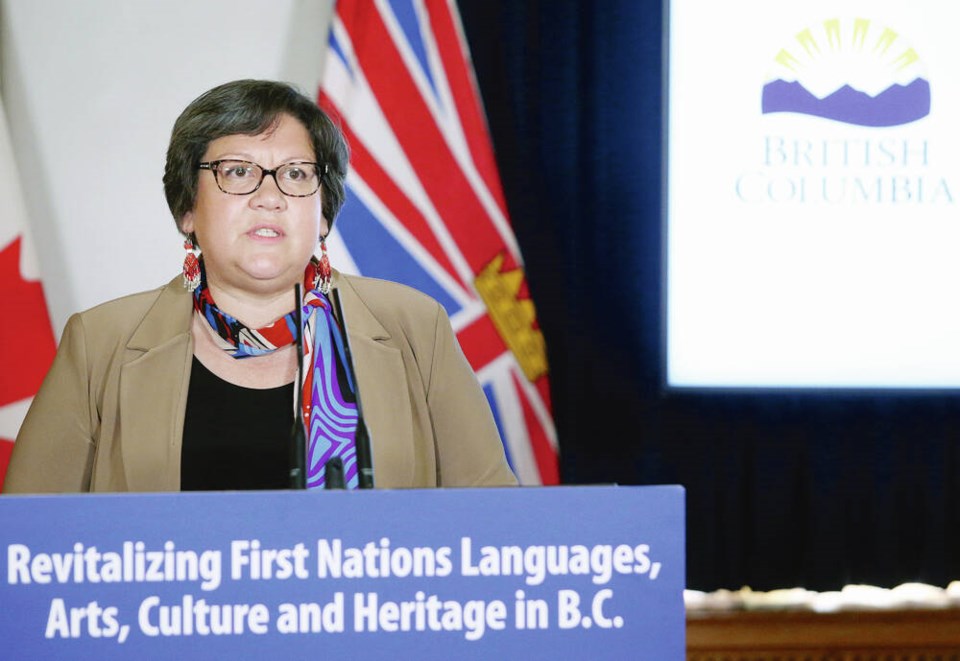The millions invested in First Nations language programs in B.C. are starting to pay off, with the number of First Nations people engaged in their languages growing 20 per cent in the last year, according to a study released Tuesday by the First Peoples’ Cultural Council.
The Report on the Status of B.C. First Nations Languages, published every four years, paints a picture of a program that is working to revitalize the languages, though it’s just a start, said Tracey Herbert, the council’s chief executive.
Herbert said she’s encouraged by the number of young people getting into language programs, momentum that needs to be “nurtured” with more investment and opportunities for B.C. First Nations people to learn their languages.
“It took many, many years, hundreds of years to interrupt and disrupt the transmission of languages. And so we do need a long-term strategy here.”
The council wants to see entire communities embrace revitalization programs rather than running small pilot projects and studies.
Herbert said long-term funding would allow them to get to work rather than spending their days writing proposals and making a case for project funding.
She said the results so far show what funding can do.
The report noted there are now 17,103 people learning First Nations languages, an increase of 3,100 in the past four years, while there are now 10,355 First Nations speakers of 34 languages in the province.
The number of immersion programs for young children has more than tripled in the last four years to 32 supporting 380 children.
At the same time, adult programs have seen increases in enrolment and more people using online language tools like FirstVoices.com and one-on-one immersion programs like the council’s Mentor-Apprentice Program, which pairs fluent mentors with language learners and has grown from 27 teams to more than 150 over the last four years.
The report’s results mirror what was reported last year in the national census.
Statistics Canada found there may be fewer people in the country who can speak an Indigenous language, but the number of younger people able to carry on a conversation in an Indigenous tongue is growing.
The census data showed 243,000 people in Canada reported being able to speak an Indigenous language, a drop from 2016, when that figure was around 251,000.
In Greater Victoria, the number of people who reported being able to speak an Indigenous language was 775, an increase from 715 in 2016.
The census data also showed more people report being able to speak an Indigenous language than those who report having one as a mother tongue, which suggests people are learning Indigenous languages.
In Greater Victoria, 200 people reported Indigenous languages as their mother tongue, while 775 reported being able to speak the language.
Herbert said government support has been key to the increase in interest.
The federal government passed the Indigenous Languages Act in 2019 to support the revitalization of the languages, which led to an investment of $44 million in B.C. alone, and the province committed $50 million in 2018 to address the language crisis.
But Herbert said the programs could always use more.
The cultural council has estimated it would cost $2 million for any community to run a full suite of language-revitalization projects and programs, which includes curriculum development and resource creation.
“This is really complicated work and it’s not something that we’re going to be able to achieve overnight. We’re really talking about rebuilding systems, knowledge systems in the community,” Herbert said.
“We’re not at a level where we can say ‘the languages are vital now and all we have to do is maintain them.’ We’re still in a reclamation phase, a phase where we’re dealing with the urgency of time making sure that we’ve documented all the languages, making sure that we have many adults taking up this work to be the new knowledge keepers and language teachers.”
The report is designed to provide benchmark data to First Nations communities and government to support language revitalization planning, evaluation and advocacy efforts.
>>> To comment on this article, write a letter to the editor: [email protected]




